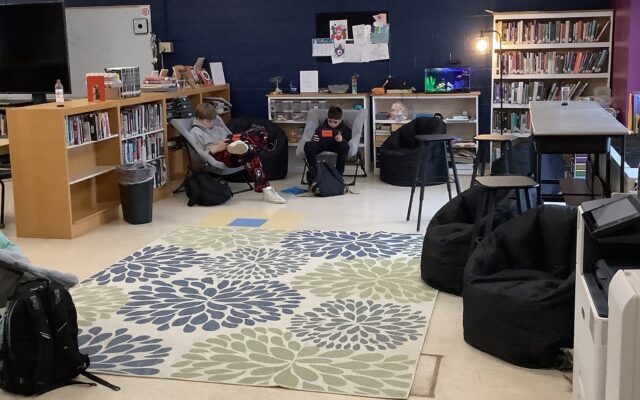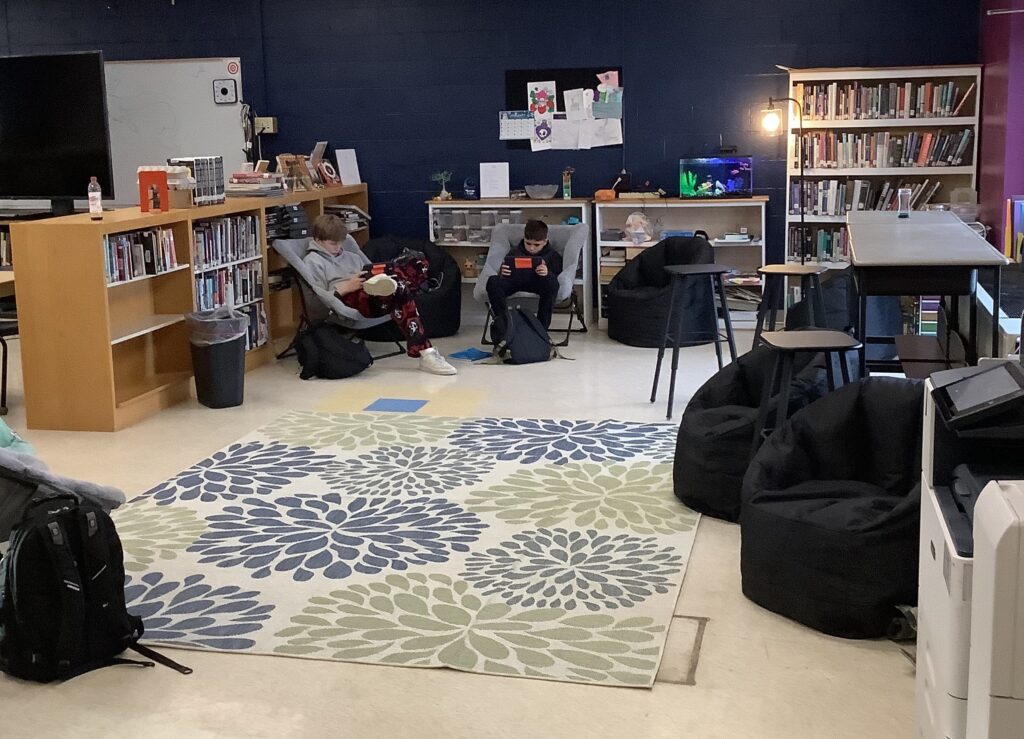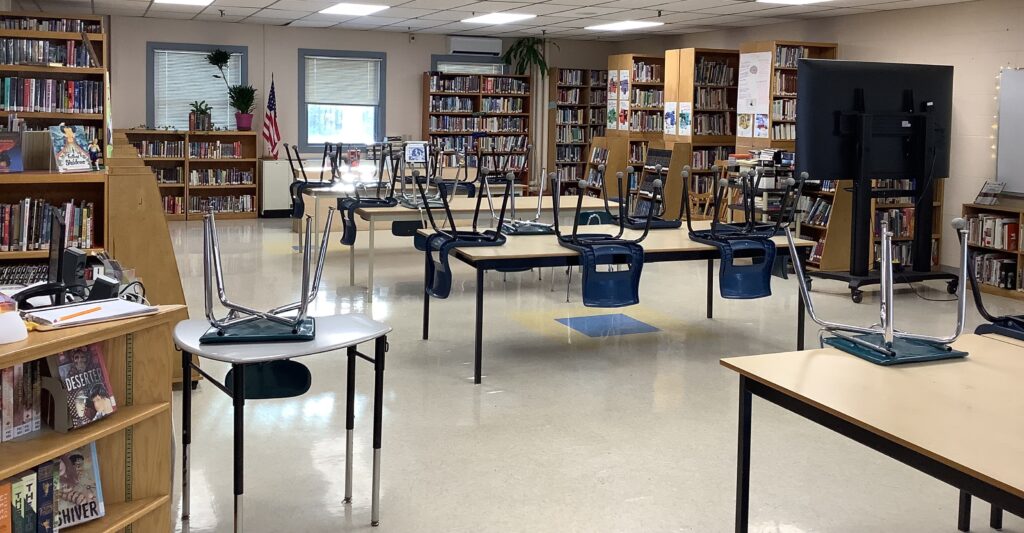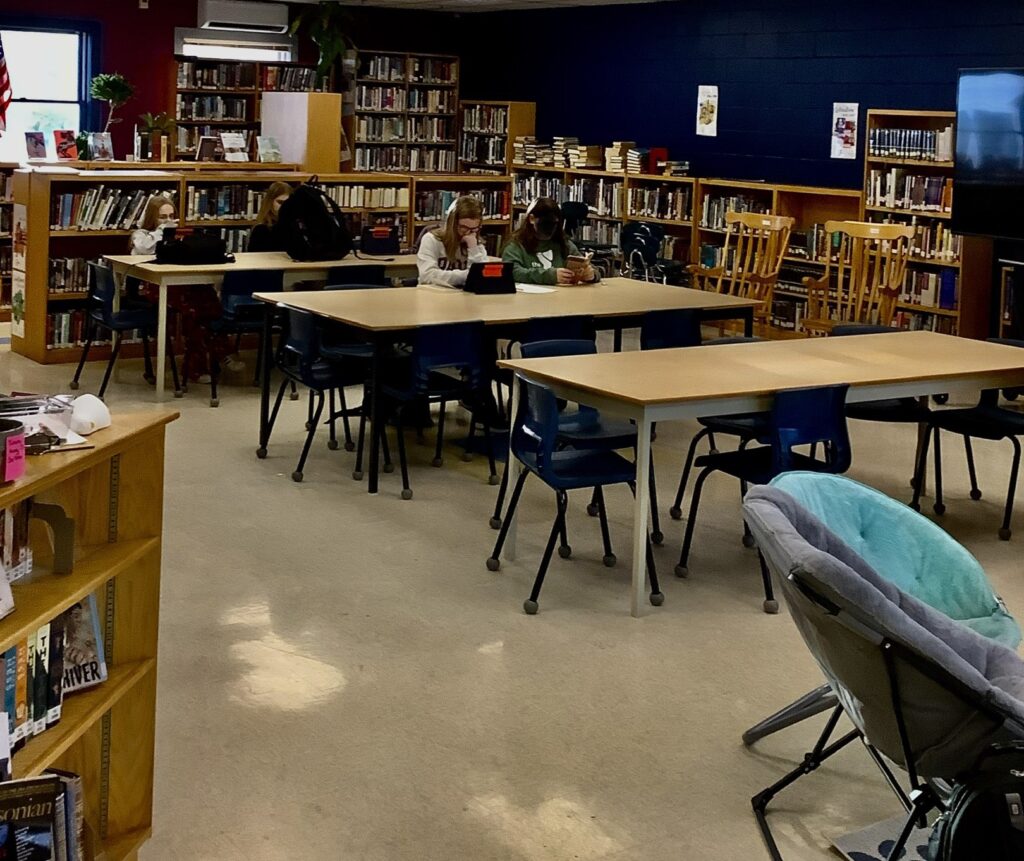
SAD 4, SAD 46 to submit new application for regional high school
GUILFORD — The Maine Department of Education has a new proposal for a regional comprehensive high school, Superintendent Kelly MacFadyen said during a Jan. 14 meeting of the SAD 4 School Board in the Piscataquis Community Elementary School cafeteria.
Only two participating school districts are needed in the application instead of a minimum of three, MacFadyen said.
“We basically have the application ready to go,” MacFadyen said, as the school board formally authorized her to work with officials from SAD 46 of Dexter to begin preparations for a new application for a Grade 9-16 (post-secondary) consolidated high school to the Maine Capital School Construction program. She said the Dexter directors passed a similar motion the week prior.
MacFadyen said the application is due in June, but she is unsure when the MDOE will announce its decision. She said there likely will be other groups applying.

NEW LOOK LIBRARY — Improvements have been made to make the Piscataquis Community Secondary School library more inviting for students, using a $20,000 grant from the Stephen & Tabitha King Foundation.
It’s been more than a half decade since SAD 46 headed up an application between itself and SAD 4 for a $100 million first-of-its-kind secondary institution integrated with a career and technical school along with the University of Maine System and the Maine Community College System, and it would support industry training programs. Later on in the process SAD 41 of the Milo area joined in a non-binding agreement, and then RSU 64 of Corinth.
At first projects based in the Madawaska and Houlton areas ranked higher, but these proposed schools did not progress as residents could not agree on where to put the building.
The Milo and Corinth area districts stopped pursuing the regional comprehensive high school with the Guilford and Dexter area districts late last year. The SAD 41 School Board voted against putting approximately $133,300 of district funds toward startup costs and a site analysis for the pursuit of the school and discontinued its participation in the project.
That came two years after representatives from the four districts met with the MDOE and were told they needed to cover the estimated $800,000 costs of an engineering study and other planning efforts before receiving $100 million in state funding to build the project. MDOE officials said the state would not fund the planning expenses, with these instead to be divided between the school units.
Last year the MDOE offered to fund half of the $800,000 costs with three districts being responsible for the other $400,000 — divided into three $133,300 shares for SAD 4, SAD 41, and SAD 46 after RSU 64 withdrew. SAD 41 decided it did not want to spend $133,000.
A site for the school may be easier to pass via referendum down the line with a geographic area consisting of just SAD 4 and SAD 46 and not four districts, MacFadyen said.
“If we get approved I think we have a good opportunity to make that happen,” she said.
The superintendent said even if the local project application is not chosen there are still opportunities to collaborate with SAD 46 and Foxcroft Academy.
Board Chair Niki Fortier and MacFadyen have met with Foxcroft Academy Head of School Arnold Shorey and Board of Trustees President Ethan Annis to discuss rehabilitating the Penquis Higher Education Center in Dover-Foxcroft and expanding vocational and technical training programs for Foxcroft students and pupils in other districts, as well as local residents who are out of high school.
Eastern Maine Community College no longer wants to own the Penquis Higher Education Center, preferring to be a tenant instead. Foxcroft Academy would ultimately own the facility, but the town of Dover-Foxcroft would own the building during the funding process.
In other business, the school board also heard from grade 7/8 language arts teacher Robyn Rich, who in 2024 was named the Piscataquis County Teacher of the Year.


BEFORE AND AFTER — The library at Piscataquis Community Secondary School before, above and after. A $20,000 grant from the Stephen & Tabitha King Foundation funded new paint and bookshelves.
“For me literacy and reading have always been my primary function as a teacher,” said Rich, who explained the award included a service component. Rich, who will be retiring in June, said the Piscataquis Community Secondary School library looked drab, so a library committee of Rich and other staff members looked into repainting the room, putting new book shelves, and making other improvements.
Rich said the committee was given the go-ahead to spruce up the library and was awarded $20,000 from the Stephen & Tabitha King Foundation to fund the project.
“The climate is so welcoming, kids love it and we’re far from done,” Rich said of the improved space.
The library has been painted deep blue with bean bags and new chairs in place, Library Ed Tech II Renee Jicha said. The space has three tables in the middle instead of five, new book shelves to create more open space, and a fish tank.
During the previous school year, 311 books were checked out, Jicha said. So far in 2024-25, 473 titles have been brought out of the library.
“It’s made a difference, kids feel like they have a place to go,” Rich said.
MacFadyen and the region’s other superintendents met last month with a DOE representative, who stated the department is monitoring revenue projections and anticipating a tough budget year. The ED 279 reports, which indicate how many subsidies school districts receive from the state, are expected to be released in February.
Additionally, PCES Principal Anita Wright said the school’s future therapy dog was born last month. Three of the puppies from the litter, a service dog and a therapy dog in-training visited sixth-graders in late December with Christy Gardner from Mission Working Dogs.
Gardner explained the differences between service and therapy dogs to students and demonstrated commands.
Every year Wright encourages the sixth-graders to participate in the “Make a Difference” challenge as they brainstorm, develop, and complete projects that positively impact others around the world.
After Gardner spoke at last year’s Veterans Day assembly, the then-grade 5 students decided their goal would be to get a therapy dog for PCES. Wright and PCES Social Worker Alexis Rollins contacted Mission Working Dogs to see if they could make the idea a reality.
Mission Working Dogs is a Lewiston-based nonprofit that breeds and trains service, therapy, and facility dogs for veterans, schools, and nursing homes. Gardner and her team have been working with PCES to determine what is needed to get a therapy dog in the school, and will continue to work with the sixth-graders throughout the year to complete the project.
The therapy dog will help PCES students form healthy attachments, develop emotional intelligence and strategies, and reduce anxiety and stress. The students will name the animal, stay updated on its progress through training, and watch it grow during its first year of life.
The earliest the dog would arrive is in the first part of 2026, after a 15-month training process, and the sixth-graders know they will have moved on from PCES by the time the dog is in the building.
There is a $5,000 cost, which includes a liability policy, for the dog, and the students are fundraising.